Stepping into a well-preserved medieval city feels like walking through a portal to the past. Cobblestone streets echo with centuries of history, towering castles watch over ancient city walls, and Gothic cathedrals stretch towards the sky. These cities offer more than just a history lesson; they provide an immersive experience, a chance to wander through the same alleys and squares as knights, merchants, and artisans from long ago.
For travelers who crave a connection to the past, exploring these historical gems is a unique adventure. Each city tells a story through its architecture, from the formidable fortresses built for defense to the ornate guild halls that signify past wealth and influence. Visiting them allows you to see, touch, and feel history in a way that museums alone cannot offer.
This guide will take you on a journey through some of the most enchanting medieval cities in the world. We’ll explore destinations where the medieval spirit is not just preserved but is a living part of the city’s character. Prepare to discover fairytale towns and fortified cities that have withstood the test of time, offering a glimpse into a fascinating and formative era of human history.
What Makes a City “Medieval”?
A medieval city is typically characterized by features that were common during the Middle Ages, an era spanning roughly from the 5th to the 15th century. These cities often grew organically, resulting in winding, narrow streets rather than a grid-like pattern.
Key architectural and structural elements include:
- City Walls and Gates: Many medieval cities were fortified with massive walls, towers, and gates to protect residents from invasion.
- Castles or Fortresses: A castle often dominated the city, serving as the residence for a ruler and a central point of defense.
- Historic Old Towns: These are the heart of the city, often a designated UNESCO World Heritage site, featuring original buildings, cobblestone streets, and a central market square.
- Gothic and Romanesque Architecture: Churches, cathedrals, and public buildings from this period feature distinct styles like pointed arches, ribbed vaults, and ornate decorations.
These cities transport visitors back in time, offering an authentic and captivating look at life centuries ago.
The World’s Most Captivating Medieval Cities
From the canals of Belgium to the fortified coasts of Croatia, these cities have preserved their medieval heritage with remarkable care.
1. Bruges, Belgium
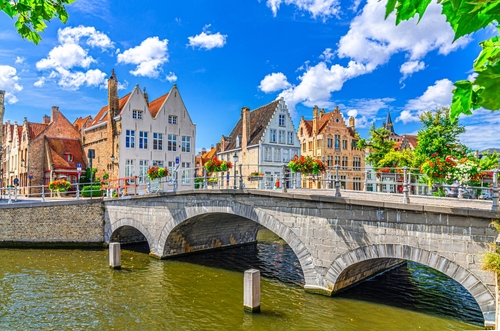
Often called the “Venice of the North,” Bruges is a fairytale city come to life. Its network of canals, cobblestone lanes, and stunning medieval buildings make it one of the best-preserved examples of a medieval city in Europe. The historic center, a UNESCO World Heritage site, is compact enough to explore on foot.
Must-See Sights:
- Belfry of Bruges: Climb the 366 steps of this iconic 13th-century bell tower for panoramic views of the city.
- Market Square (Grote Markt): Surrounded by colorful, step-gabled guild halls, this bustling square has been the city’s commercial heart for centuries.
- Church of Our Lady: This church showcases a mix of architectural styles and houses Michelangelo’s famous sculpture, Madonna and Child.
2. Prague, Czech Republic
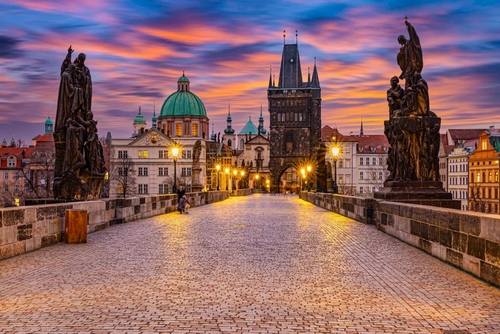
Prague’s “City of a Hundred Spires” nickname barely does it justice. Its Old Town Square is one of the most beautiful in Europe, and the city’s skyline is a breathtaking collection of Gothic towers and Baroque domes. Spanning the Vltava River, the iconic Charles Bridge, lined with statues of saints, connects the Old Town to the magnificent Prague Castle complex.
Must-See Sights:
- Prague Castle: A sprawling complex of palaces, churches, and gardens that has been the seat of Czech rulers for over a thousand years.
- Charles Bridge: Take a walk across this stone bridge at sunrise or sunset for an unforgettable experience.
- Astronomical Clock: Located on the Old Town Hall, this intricate 15th-century clock is a marvel of medieval engineering.
3. Carcassonne, France
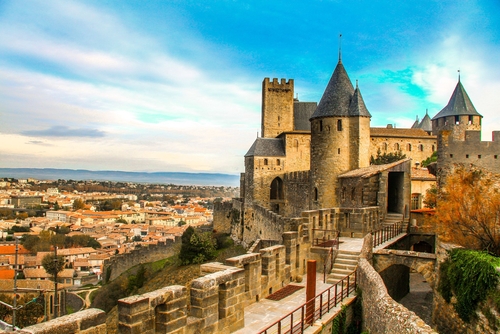
Carcassonne is the quintessential medieval fortress. Its Cité de Carcassonne is a perfectly restored fortified city, complete with double defensive walls, 53 towers, and a castle. Walking through its gates feels like stepping directly into a medieval epic. The restoration work in the 19th century by architect Eugène Viollet-le-Duc ensured its survival for future generations.
Must-See Sights:
- Château Comtal (Count’s Castle): Explore the 12th-century castle within the fortress walls.
- The Ramparts: Walk along the inner and outer walls to appreciate the city’s defensive genius and enjoy views of the surrounding countryside.
- Basilica of Saints Nazarius and Celsus: A stunning church that blends Romanesque and Gothic architectural styles.
4. Dubrovnik, Croatia
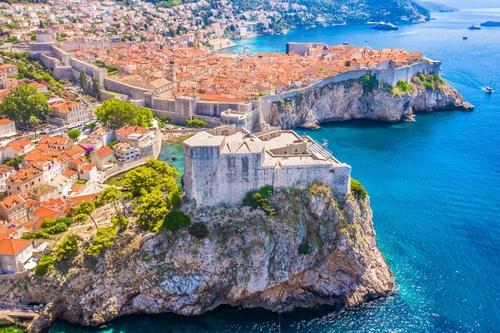
Known as the “Pearl of the Adriatic,” Dubrovnik’s fame surged after appearing as King’s Landing in Game of Thrones, but its history is far more compelling. The city is enclosed by magnificent 16th-century walls that run for nearly two kilometers. Inside, you’ll find a maze of limestone streets, Baroque buildings, and monasteries.
Must-See Sights:
- City Walls: A walk along the top of the walls offers spectacular views of the Old Town and the sparkling Adriatic Sea.
- Stradun: The main street of the Old Town, perfect for a leisurely stroll.
- Rector’s Palace: A beautiful palace that was once the seat of government for the Republic of Ragusa.
5. Tallinn, Estonia
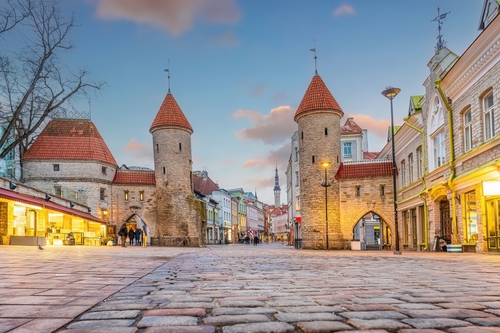
Tallinn’s Old Town is a remarkably intact medieval Hanseatic city. Its mix of cobblestone streets, merchant houses, and towering church spires creates a magical atmosphere, especially when covered in a blanket of snow during winter. The city is divided into the lower town, once a bustling trading hub, and Toompea Hill, the historical seat of power.
Must-See Sights:
- Town Hall Square (Raekoja plats): The heart of the lower town, home to the Gothic Town Hall and a vibrant market.
- Alexander Nevsky Cathedral: An opulent, onion-domed Russian Orthodox cathedral on Toompea Hill.
- Toompea Castle: Today, it houses the Estonian Parliament, but parts of the original fortress are still visible.
6. Siena, Italy
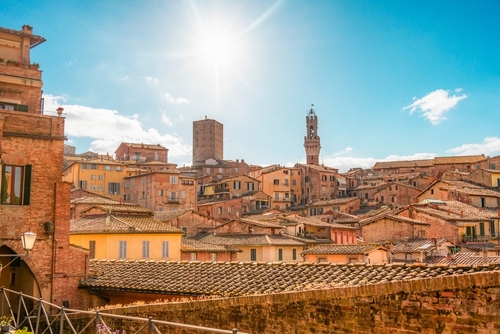
While its neighbor Florence often gets more attention, Siena is a masterpiece of Italian Gothic architecture. The entire city is built around the fan-shaped Piazza del Campo, one of Europe’s greatest medieval squares. Twice a year, this piazza hosts the Palio, a frantic, bareback horse race with roots dating back to the 17th century.
Must-See Sights:
- Piazza del Campo: The unique shell-shaped central square, perfect for people-watching.
- Siena Cathedral (Duomo di Siena): An awe-inspiring cathedral of white and greenish-black marble, filled with priceless art.
- Torre del Mangia: Climb this slender tower for an incredible view of the piazza and the Tuscan hills beyond.
7. Edinburgh, Scotland
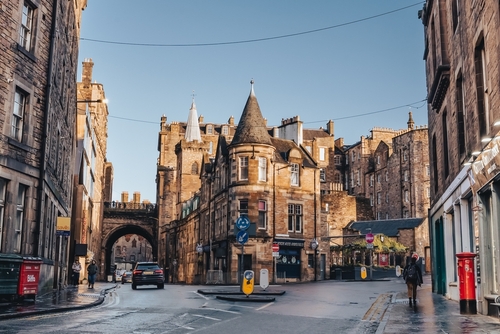
Edinburgh’s medieval Old Town is a labyrinth of winding alleys (closes) and hidden courtyards, all watched over by the imposing Edinburgh Castle. The Royal Mile, which runs from the castle down to the Palace of Holyroodhouse, is the historic spine of the city, lined with centuries-old buildings, pubs, and shops.
Must-See Sights:
- Edinburgh Castle: Perched on an extinct volcano, this historic fortress is home to the Scottish Crown Jewels.
- The Royal Mile: Explore its many closes and wynds to discover hidden gems.
- St. Giles’ Cathedral: The High Kirk of Edinburgh, known for its distinctive crown steeple.
8. Český Krumlov, Czech Republic
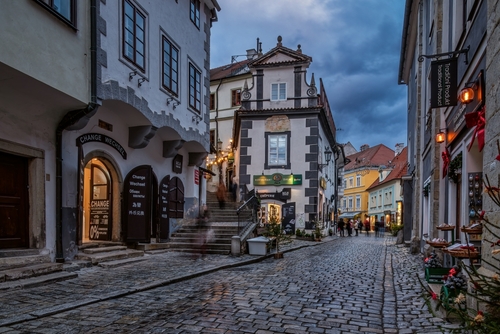
A smaller, storybook version of Prague, Český Krumlov is nestled in a bend of the Vltava River. Its Old Town is a perfectly preserved example of a small medieval town, with a magnificent castle complex towering above it. The town’s enchanting atmosphere makes it a popular day trip from Prague, but it’s worth staying overnight to experience its quiet, magical evenings.
**Must-See Sights:
- Český Krumlov Castle: The second-largest castle complex in the country, featuring a unique Baroque theater.
- Old Town Square: A charming square surrounded by colorful Renaissance and Baroque buildings.
- Latrán: The district surrounding the castle, filled with artisan shops and cozy restaurants.
9. Rhodes, Greece
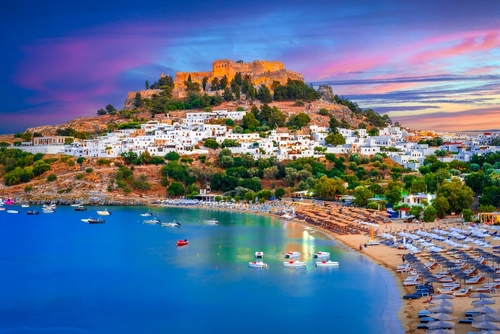
The Old Town of Rhodes is one of the largest and best-preserved medieval cities in Europe. It was built by the Knights of Saint John, a military religious order, in the 14th century. Behind its imposing walls, you’ll find a blend of Gothic architecture and structures from the later Ottoman period, including mosques and public baths.
Must-See Sights:
- Palace of the Grand Master: A restored Gothic castle that now serves as a museum.
- Street of the Knights: A perfectly preserved cobblestone street where the knights lived.
- The Fortifications: Walk the moat or parts of the walls for a sense of the city’s power.
10. Regensburg, Germany
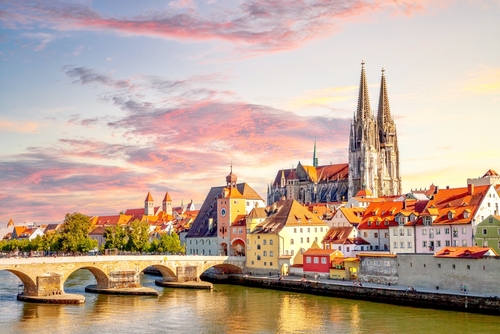
Located on the Danube River in Bavaria, Regensburg’s medieval center survived World War II unscathed. As a result, it is the largest intact medieval old town north of the Alps. It boasts nearly 1,000 monuments, including its famous 12th-century Stone Bridge and the soaring St. Peter’s Cathedral.
Must-See Sights:
- Stone Bridge: A masterpiece of medieval engineering that has connected the old town with the Stadtamhof district for over 800 years.
- St. Peter’s Cathedral: A magnificent example of German Gothic architecture.
- Old Town Hall (Altes Rathaus): Explore the historic rooms where the Perpetual Diet of the Holy Roman Empire met.
11. York, England
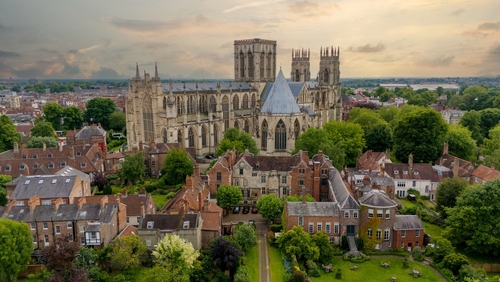
With its Roman roots and Viking past, York is a city layered with history. Its medieval heart is contained within impressive 13th-century city walls. At its center stands the magnificent York Minster, one of the world’s largest Gothic cathedrals. The Shambles, a narrow street with overhanging timber-framed houses, is believed to be the inspiration for Diagon Alley in the Harry Potter series.
Must-See Sights:
- York Minster: The largest Gothic cathedral in Northern Europe, famous for its priceless stained glass.
- The Shambles: Wander down one of the best-preserved medieval streets in the world.
- City Walls: Walk along the longest circuit of medieval city walls in England.
Are the Most Magical Medieval Cities Also Great Places to Experience Holiday Magic?
Many enchanting medieval cities blend history with festive cheer, making them ideal for exploring holiday magic towns. Cobblestone streets lined with twinkling lights, charming markets, and cozy taverns create a picturesque backdrop for seasonal traditions. These destinations truly capture the essence of holiday magic, offering unforgettable experiences for all.
Your Medieval Adventure Awaits
Exploring these medieval cities is more than just a vacation; it’s an opportunity to connect with a history that continues to shape our world. Each city offers a unique window into the past, where stories of kings, knights, and common folk are etched into the very stones beneath your feet. Whether you’re drawn to the romance of a canal-side town or the might of a fortified citadel, your next great historical adventure is waiting.